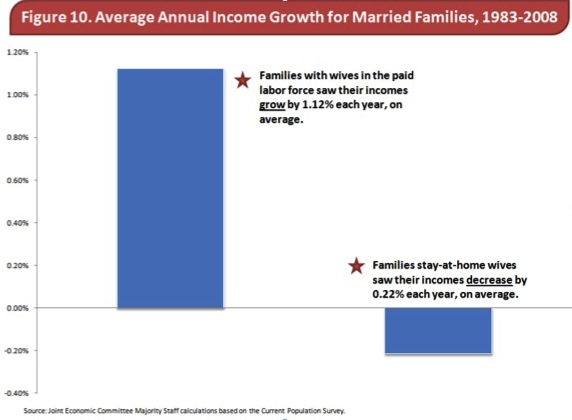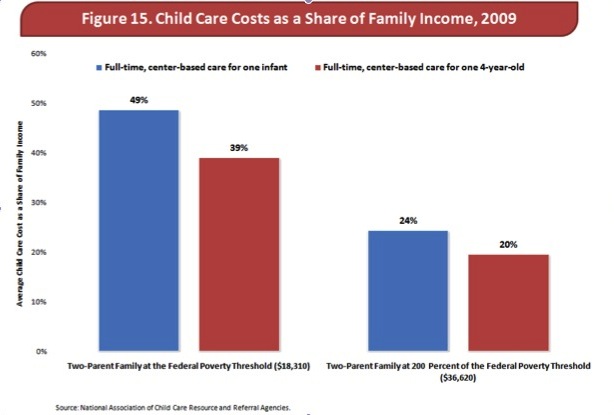How costly is child care?
You may already know that women’s workforce participation has increased and gender wage gaps have been closing gradually, although we still have a long way to go. Work-life balance can be costly, and raising children is rewarding yet financially challenging.
A new report by the congressional Joint Economic Committee gives an excellent description on the status of women and challenges they have faced in the labor market over the last 25 years (ht to Catherine Rampell at Economix).
As a researcher of the care economy, I couldn’t help noticing the following two graphics. First, Figure 10 in the original report:
The opportunity cost of being a stay-at-home mom is high and grows as time goes by at the rate of 1.34 percent a year! Imagine how much worse off the family will be in 30 years with all the forgone income, savings, and smaller social security checks to receive after retirement, and so on.
Some of you may claim that it was their deliberate choice to stay at home, so the society should not come to the rescue. Well, if Paris Hilton becomes mom and decide to stay at home to take care of her kids, she probable won’t need any social support other than occasional photo-shoot opportunities to upkeep her celebrity status. For most of us with less financial freedom than Ms. Hilton, however, the choice may have been in part forced by lack of affordable quality care.
Speaking of costs, Figure 15 shows how unequal child care expenses are distributed across families with different income levels:
Looking at the costs as a share of family income, I wonder: how in the world can a mom can keep her job and send her kids to day-care, unless society provides support? Having kids appears to be one of the traps of poverty!
To address the inequalities of care burden, one solution is to expand social care provision and make it universal, if possible (universal care does not mean one is forced to join the system by law). It will not only free many, many women from the costly choice and burden, but offer jobs to many of them in the care economy, as my colleagues and I have proposed.
P.S. One question for readers: what is a better way to internalize the positive externalities of raising the productive citizens of tomorrow, let alone ensuring the survival of human species? (I think funding NASA projects sort of fits in the question – cutting edge technology development and its spillovers, for instance the Temperpedic mattress, and the search for another habitable planet.)





 ShareThis
ShareThis